""Great Wall of China""
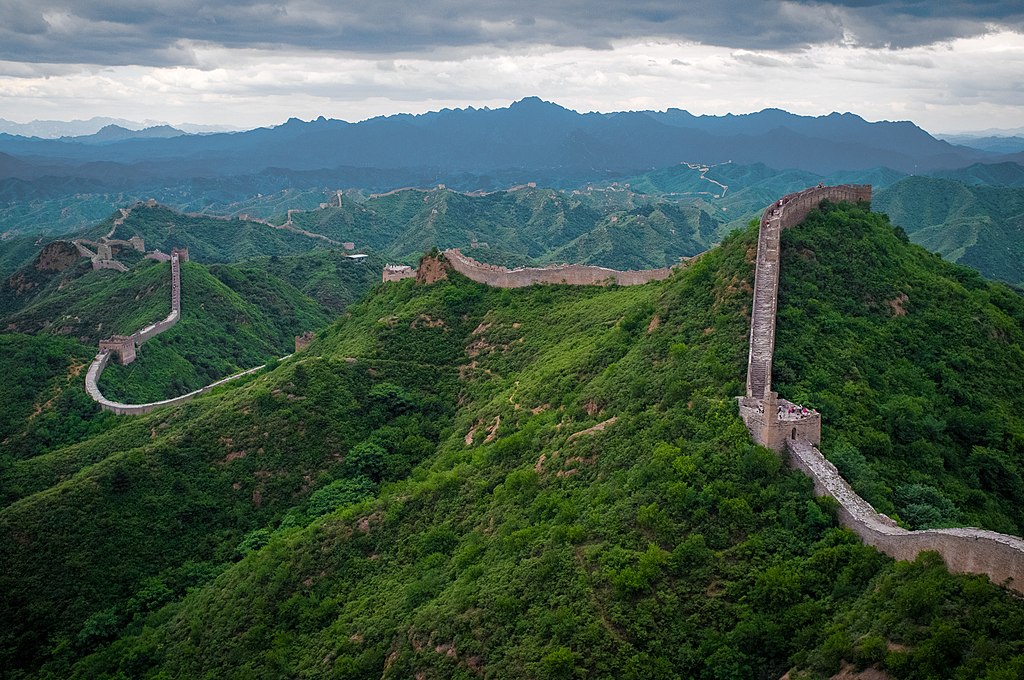
The Great Wall of China is one of the greatest sights in the world — the longest wall in the world, an awe-inspiring feat of ancient defensive architecture. Its winding path over rugged country and steep mountains takes in some great scenery.

Beauty of Great Wall of China
Great Wall History:
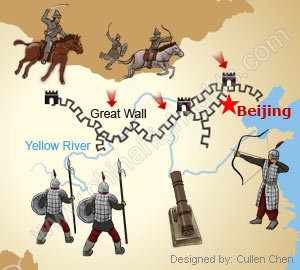
The Great Wall was built to prevent invasion by northen nations (Mongols and Manchu) and protect silk road trade.
The History of the Great Wall of China — 7+ Dynasties; 2,000+ years
The Spring and Autumn Period (770–476 BC):
It's generally believed that the first parts of the Great Wall were built during the Spring and Autumn Period, when the eastern and central region of what is now China consisted of many small states or princedoms.
To protect their states the princes ordered independent walls be built along state borders. These were like the Great Wall in construction, but on a smaller scale. The earliest was probably built between the states of Lu and Qi around 650 BC, which later became part of the Chu State Wall.
The Warring States Period (475–221 BC):

As rival states fought for territory and power, the influence of the Zhou kings waned. The small states were joined together by warlords by the beginning of the Warring States Period to form seven large states. (Chu, Qi, Wei, Yan, Zhao, Qin, and Han)
The Qin Dynasty (221–206 BC):
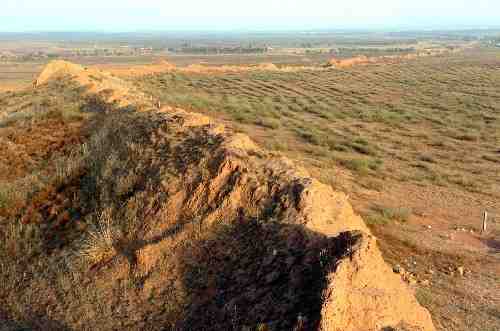
The outcome of the Warring States Period was that the State of Qin proved to be the stronger, conquering and unifying the other states. Qin Shihuang (king of the State of Qin from 247–221 BC) became the first emperor of China and ruled China for most of the short Qin Dynasty.
The Han Dynasty (206 BC – 220 AD):
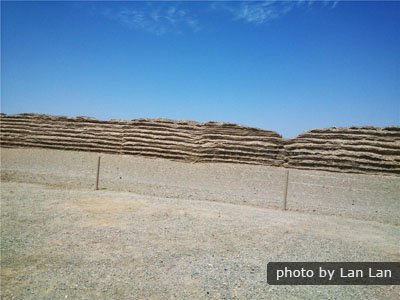
After Qin Shihuang's death in 210 BC, the Qin Dynasty failed to maintain its authority and was replaced by the Han Dynasty. It was one of the golden ages of China when the nation was consolidated. The Han Dynasty Great Wall from the North Korea coast near Pyongyang in the east to Jade Gate Pass in the west was the longest the Great Wall has ever been at more than 8,000 km (5,000 miles).
The Song Dynasty (960–1279):

The Song Dynasty, known for its development of China's economy and trade, had a history of building the Great Wall to prevent invasions of Liao, Western Xia and Jin in the north and northwest. The Jin, or Manchus, hovever did get through the Great Wall and controlled the north of China during the Jin Dynasty (1115–1234). The Jin Great Wall was unable to stop the vast Mongol Empire invading, consuming China, and beginning the Yuan Dynasty.
The Yuan Dynasty (1271–1368):
The Yuan Dynasty was the first dynasty in which the whole of China was controlled by a non-Han people, the Mongols. The Great Wall had done a good job of preserving Han China for 1,500 years. Building of the Great Wall, not surprisingly, ceased during the Yuan Dynasty, as China and Mongolia to the north were one.
The Ming Dynasty (1368–1644):

When the Yuan Dynasty collapsed due to civil unrest the Chinese Han once again took control under the command of rebel leader Zhu Yuanzhang, who became the first emperor of the Ming Dynasty. China flourished during the Ming Dynasty and its military might swell. The Great Wall was systematically rebuilt in a 100-year project to prevent further northern invasion.
Post-Ming History (1644–present):
A breach in the Great Wall at Shanhai Pass in 1644 by Manchu forces signaled the end of Han control in China for the last and final Chinese dynasty, the Qing Dynasty (1644–1911). It also signaled the end of construction and maintenance of the Great Wall, until the Badaling sectionwas restored by the government of the Peoples' Republic of China, and opened to the public in 1957 as a tourist attraction.
Since then other sections have been restored and opened to the public. See a list of Great Wall sections close to Beijing.
Great Wall Tour Tips:
Which Section to Visit :
We would rank Beijing's nearby Great Wall sections as follows, according to our customers' feedback and our own personal experience:
Best Time to Visit:
The scenery of the Great Wall varies with the seasons, which offers many features and fodder for photographers who seek to obtain characteristic photographic works at any time of the year. However, if you are an ordinary visitor, the best times are spring and autumn, especially May, September or early October when it is usually sunny, with brisk temperatures, leaving you more refreshed and comfortable.
Although it is hotter, June to August is an alternative, as the tourist season is in full swing. November to April is always bitterly cold with biting winds, when the Great Wall encounters few, if any, tourists.
Health and Safety:
a. Carry an umbrella to protect you from the sun as well as potential rainfall.
b. Anoint yourself with some sunscreen and wear sunglasses to avoid the harm from strong ultraviolet radiation.
c. Please inquire about the weather condition before traveling. Do not visit the wall on rainy days. In case it rains while you are on the wall, do not use cell phone, broadcast or any other communication equipment. Turn their power off and take shelter in a beacon tower to avoid lightning strike.
d. As it is always dry in spring, autumn and winter, moisturizer may be helpful to moisturize your skin.
e. It is quite windy in spring, autumn and winter, especially on the Great Wall due to its high altitude, so scarves can be warm and windproof to protect your face.
f. Some sections of the wall are very steep but still can be manageable, use the handrail.
g. Do not be bold to climb the undeveloped sections where the areas are insecure or damaged, or you may injured by the breakage of the wall.
h. Carry some medicines such as remedies for cold, carsickness and some Band-Aids so that they are readily available should the need arise.
Other Travel Tips:
a. Get up in the early morning at about 07:00 to catch the first official tourist bus to arrive at the Badaling around 09:00-10:00 to avoid the large crowds of tourists, and thus you can get an early return to the city proper in the evening.
b. For travel to Badaling , you can also hire a taxi and have a round trip journey for about CNY400.00 according to the taxi type and your negotiation with the taxi driver.
c. Allow two to three hours for your visit when in Badaling section.
d. Cable cars are only available in Badaling, Mutianyu, Simatai and Jinshanling sections.
e. You should be aware that noisy hawkers could be a problem on the wall.
f. Learn more of the culture and history of the Great Wall before your hiking trip, to have a more informed experience.
g. For protection of this world heritage, graffiti is not allowed on the wall.
h. Please leave no litter on the wall, there are waste bins provided.
Natural Beauty of Great Wall:
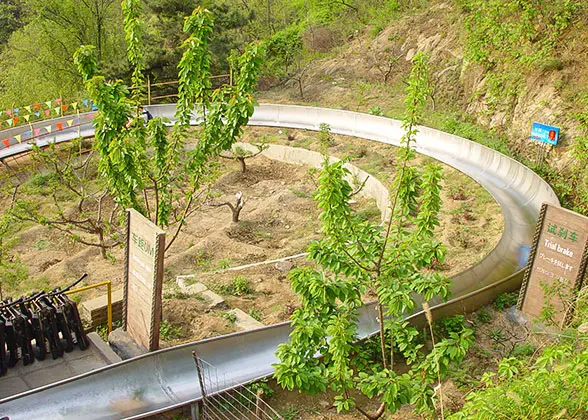
Slideway
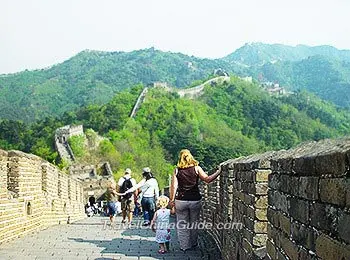
Fresh Green Scenery
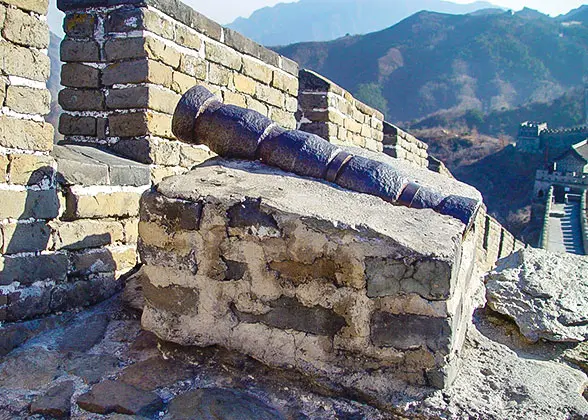
Discarded Cannon
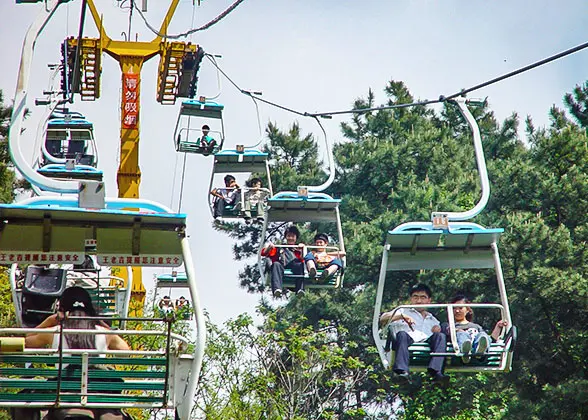
Cable Car
Beauty of Great Wall
Beauty of Great Wall
Beauty of Great Wall
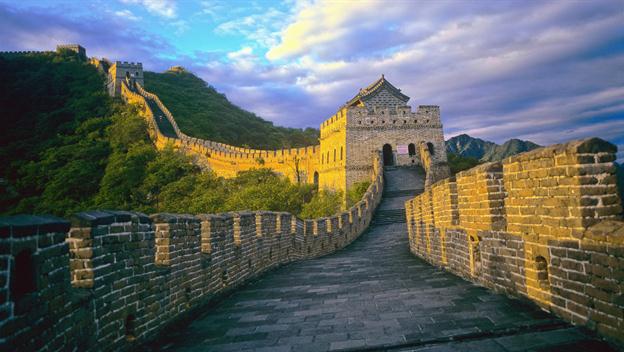
Beauty of Great Wall

Beauty of Great Wall

Beauty of Great Wall
Thanks
Nazmul Hasan Apu
No comments:
Post a Comment